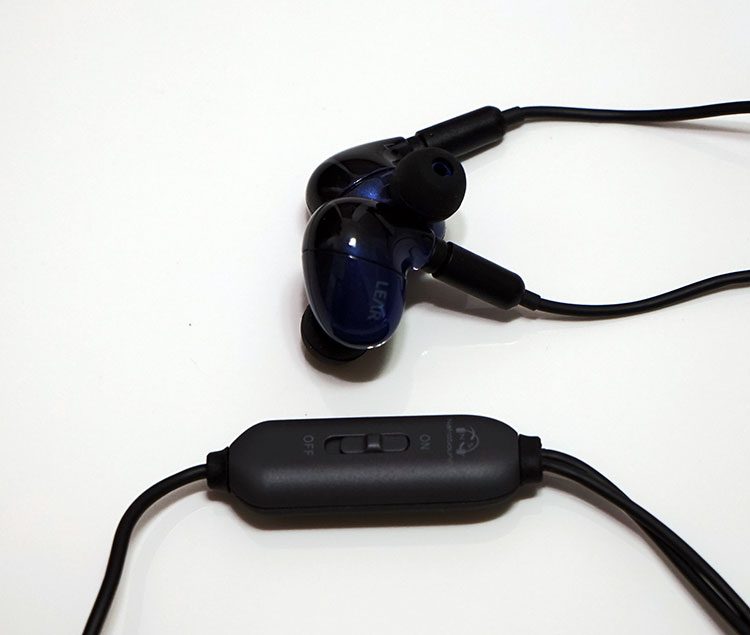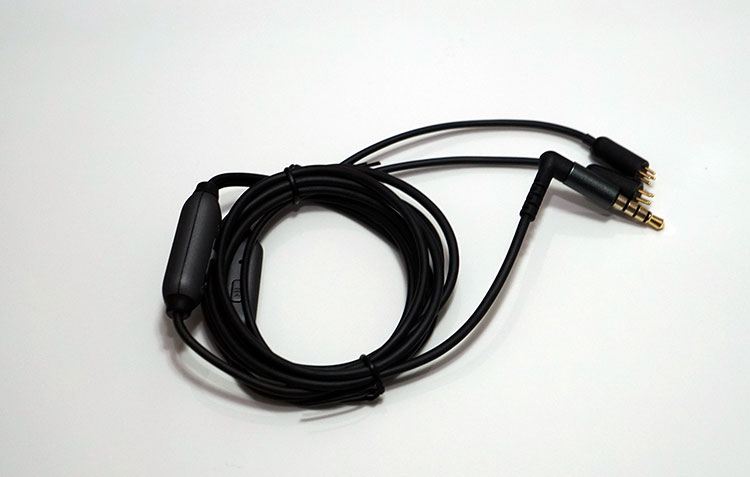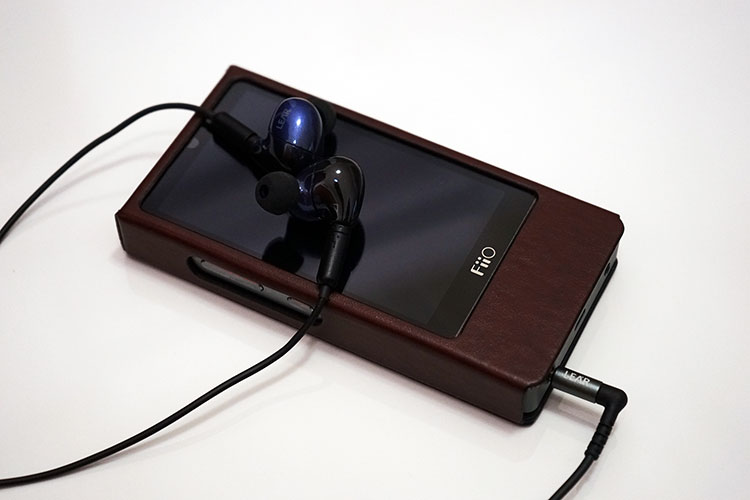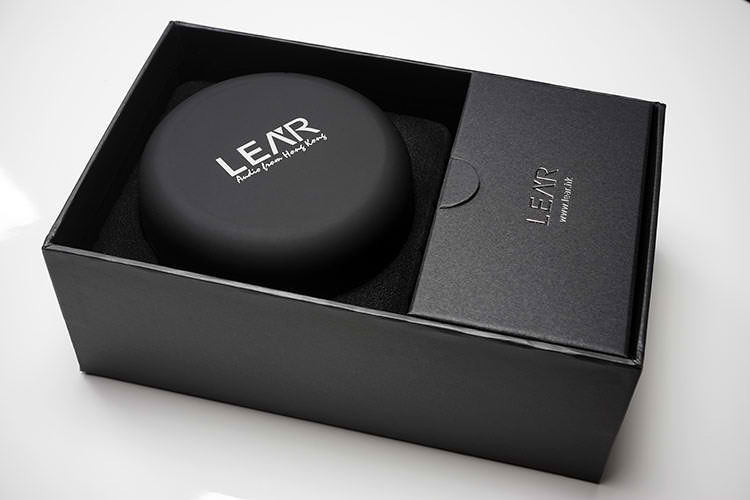Disclaimer: The LEAR NS-U1 V2 sent to us is a sample in exchange for our honest opinion. We thank the team at Lear Audio for giving us this opportunity.
To read more about Lear products we reviewed previously on Headfonics, click here.
Note, this review follows our new scoring guidelines for 2020 which you can read up on here.
Last year Lear sent us their all-new NS-U1 NatroSound IEM for around $200 which was their first attempt at recreating a more natural sound field in which they felt better represented that loudspeaker sound, particularly for movies.
I actually thought, in its own right, the NS-U1 was a decent dual dynamic driver IEM, with a nice comfy fit regardless of that huge size and a level of sound quality that was pleasing to the ear. The additional switch to bring in the NatroSound technology to tighten the left-right channel separation of a regular IEM sound did indeed produce a more natural front image.
Roll on 2016 and Lear are back with a slightly revised edition of the NS-U1 at a slightly higher price of HK$1,688.00 but that comes with the addition of a brand new cable that offers a higher degree of control over the NatroSound reproduction.
What’s The Pitch?
For those coming to the concept of NatroSound for the first time, it is worth going through what it is all just to get a handle on the technology involved. NatroSound is LEAR’s interpretation of how a loudspeaker sound signature should be heard if it was delivered through an IEM, i.e. much closer to the real experience than what current IEM’s deliver.
LEAR’s contention is the direct left-right input of sound of a traditional IEM gives a rather unnatural sound with a clear separation of right-left channels such as you would not find with traditional speakers which have a much more integrated front image sound and thus more natural to our ears.
The argument here is that the right ear can’t hear what the left ear is hearing and thus you get what some describe as the “inside your head” sound that is normal for most IEM users. How NS sound differs is that it delivers both right and left sound to both ears in such a way as to recreate the type of sound field you would get with a regular speaker setup using acoustical HRTF simulation earphones technology.
Now, this all might seem like dabbling with crosstalk to produce a closer field and less left-right channel separation but Tatco explains that in reality, the technology here is quite different. In the NS-U1 the main units contain two drivers which are not technically dual drivers but housing one traditional dynamic driver for your regular IEM sound delivery and one NS driver unit with a series of acoustic path tubes for the delivery of the NS sound signature.
All of this is switchable, meaning you can opt to have a traditional IEM sound from the NS-U1 or choose instead to listen to your music using the NS filter and driver design housed side by side. This is achieved by a simple in-line switch on the main cable of the NU-S1 itself. So note this is a hardware technology not a software implementation at play here.
What has changed?
There have been a number of external and internal changes and these focus on two areas; the cable and therein the NatroSound control as well as the driver units themselves both in external appearance and internal mechanics.
The NSC-03 Cable
The Old
The original NS-U1 came with the NSC-01 cable. This is a 1.2m round rubberized OFC 4-pin detachable with a single inline NatroSound on/off module and a remote inline mic and playback module further up the cable.
It was also finished with a rather stiff but not unworkable memory coating at the top end that gave it a large swoop like an accent in its looks. Combined with the large driver units it was quite unwieldy looking and if you are a glasses-wearing I am pretty sure this setup was never ideal.
The New
With the new edition NS-U1 not only do you get a far more advanced NSC-03 cable with better aesthetics such as vastly improved over-ear cable design but you also now get Lear’s brand new adjustable NatroSound on/off module.
Previously you can only turn it off and on, the NatroSound levels were pre-fixed. Now you can adjust the level of NatroSound into the mix when turned on with a simple dial to the top right (as you look down on it).
4 Sound Signatures
On top of that, you can adjust the level of bass you want to hear also with a similar type dial at the bottom right of the module. You can adjust the level of bass in either off mode or when the NatroSound is turned on.
That gives you 4 different and variable sound signatures now compared to just two with the previous version of the NS-U1. It also gives you complete control over the levels instead of being fixed. I am all for choice so I see this as a really solid addition to the NS-U1 feature set.
Jack Enhancements
Lear have been rather generous fellows by throwing in the NSC-01 as standard into the new NS-U1 edition (hence the slight price increase) so you get both options at your disposal depending on how you wish to use the IEMs.
Just as a small note and doubtless this is to accommodate feedback, Lear has enhanced the plug of NSC-01 by offering better internal insulation. This is to prevent issues of short-circuiting and connectivity on various brands of smartphones either new out or never been tested before. Though not directly stated I am presuming this improved plug is also on the end of the NSC-03 cable.
The Drivers
Externally, Lear has carried out a few cosmetic changes to the NS-U1 drivers. Gone now are the old color combinations of silver and black electroplating of the original drivers and in comes a subtler two-tone darker shade of blue and black.
The basic bulbous shape and size, as well as the core plastic lightweight materials, have stayed the same. The other subtle but welcome change is the right and left engraving which is now a clear white decal rather than a subtle emboss on the silver plating of the original. Much easier to see at a glance when connecting the cables.
Fit & Seal Differences
Nozzle
A further change is a comparatively shorter nozzle on the new edition compared to the rather long probing stalk of the older unit. This new relaxed-fitting should, in theory, prevent this peculiar habit I developed with the first model of taking it out, cleaning my ears and putting it back in again. Not quite an irritation but it was distracting.
This time, the end of the nozzle does not stick out beyond the stock silicone tips so you won’t find hard plastic pushing against your ear canal. In all honesty, the seal was just as good as first time round with the longer nozzle.
Little need to fiddle either for a sweet spot with the bonus that they didn’t probe so deep into my ear canal. Lear also claims the shorter nozzle should improve audio reproduction from the main dual driver setup inside the shells compared to the old longer nozzle.
Memory Hooks
The old stiff long ones are gone on the new NS-U1 and instead you just get a naturally curving soft rubber over the ear experience. You get the feeling the memory hooks were never really needed in the first place.
It is a tremendous improvement and they allow for a much comfier and steadier experience still the microphonics out. Hoorah, says I, and probably the glasses-wearing nation to boot.
Sound Impressions
Tonal differences
All Effects Off
With both NatroSound switches off on old and new version and bass switched to zero the NS-U1 v2 actually comes out ahead as the more eye-catching and musical sounding IEM. It has a warmer presentation compared to the vastly more neutral and very flat sounding v2.
Bass performance is considerably enhanced and elevated over the incredibly lean sounding v2 which rolls off considerably around the 250Hz marker. I will give the v2 an edge in sparkle and detail but it’s lacking in dynamics and sounds compressed as result of all those fundamentals being sucked out.
If you keep all switches at this level I wouldn’t blame you for picking the v1 for its more vivid presentation and stronger bass performance.
Bass Effect on/NatroSound Off (NSC-03 v2)
However, it is unlikely you are not going to mess around with the bass dial on the v2 and as such the initial lead of the V1 is eaten away the further you turn up the bass dial. The sweet spot for clarity and power is around 60. Once you go further the signature gets way too muddy and bloated sounding, drowning out the rest of the range in favor of a solid wall of bass.
At the same time, there is a touch more sparkle and detail in its treble response over the NS-U1 v1 which doesn’t fall away as sharply as before. I still think the vocal presence of the V1 has a slightly thicker, more forward, note compared to the more neutral sound of the V2 midrange and vocal performance.
The V2 though displays a superior control on the attack and decay of its new drivers, sounding the cleaner and pacier of the two and with a touch less sibilance. It also sounds a lot less peaky in its lower treble performance with better top-end extension. You can easily achieve a musical but clean sounding u-shape response here.
On balance, the NS-U1 v2 starts pulling ahead in regular IEM terms once you find the sweet spot in the bass dial. The additional clarity in the mid and treble response is already superior to the somewhat peaky V1 experience. That additional controlled bass response adds much-needed power and depth to the V2.
NatroSound On/Bass Off
The effect of NatroSound on the new DD configuration of the NS-U1 V2 is definitely a superior match to the original V1. In the original NS-U1 configuration, the fixed NatroSound setting of the NSC-01 cable produced a more than capable frontal image with less left-right separation but also threw in quite a lot of additional warmth that gave too much of a bass response in comparison to the rest of the range.
Now you still have the injection of warmth via the NatroSound control on the new V2 but because of that more neutral stock sound, it actually sounds a lot more natural.
I found a NatroSound setting of around 70% gave just the right amount of crosstalk and separation. At the same time, bass depth and presence was perceptibly closer and deeper with NatroSound but not as aggressively weighted as the bass dial performance.
Any further in the NatroSound dial and I found the front image to too far forward, aggressive and intimate. Picture the mess, if you will, of a rather a small nightclub with large speakers, this may be a preference thing… millennials.
NatroSound On/Bass On
This is the moment where you will find yourself holding the remote NatroSound module like some sort of PlayStation racing wheel trying to find just the right blend of crosstalk, bass depth, and strength as well as imaging. It is not as easy as you think but it a fun option to have a ton of variable sounds on the NS-U1 V2.
The only thing I can remark about the bass adjuster of the NSC-03 module is the lack of direct impact until you get over 50% of the dial so once again around 60% is about the max I would use it with NatroSound and dropping the NatroSound by around 10-20% from the previous marker when the bass dial was at zero.
The important thing I drew from this balancing act is the difference between the two dials positioning and elevation of the NS-U1 v2 bass performance. When using them combined the bass dial will add bass weight and impact but not change the perceptible listening distance.
NatroSound will change the presentation bringing it in and forward or back depending on your preference. Then it is simply a question of blending until you get the right sound for you.
With the NSC-01 cable you do not have this combined option, all functions of performance are fixed with NatroSound with a simple on or off setting so you are much more limited on both the tonal mix and the presentation and channel mix you want to hear with the V1 NS-U1.
Matching Differences
Efficiency
Lear has changed the drivers in the new NS-U1 v2. Gone are the 5.8mm CCAW Neodymium magnets construct and in comes x 6mm dynamic drivers of the same materials but different tuning. Though on paper the old NS-U1 had a rate sensitivity of 105db this ran closer to 100dB with the NSC-01 wire.
With the NSC-03 wire and new drivers, the rating is now closer to 105dB though in truth there is not a huge difference in gain requirements with both sets running just fine on the X7/AM3 combo of around 70-73 steps.
Digital gain controls the DX90 is still around 200 and the DX80 at around 70-75. You will get better results though with better quality amping from good DAPs or stacks portable amps.
Tonality
Tonally the matching ultimately depends on how you like the new NS-U1 v2 bass and NatroSound setting but the X7/AM3’s more balanced signature sounded the most flexible in terms of bass quality and top-end performance.
The X7 also edged the DX80 again in terms of detail retrieval and the AM3 and AM2 cards were better for dynamics and power than the IEM card. The Cayin I5 /NS-U1 performance was a little more musical and intimate so it does not need as much bass gain to get good results and a slight decrease in the NatroSound setting.
Our Verdict
Is it a step up on the first edition? Oddly enough with the dials all down to zero it doesn’t sound as good. It lacks vibrancy, dynamics, and staging. It has detail, clarity but sounds dead flat. You really do need to tweak the bass and NatroSound this time round to produce a level of sound quality that you are likely to enjoy.
Once you do then it is an improvement on the older version from last year with a cleaner sound, better top-end clarity, and less peakiness. The ability to mix and match both bass and imaging variables with NatroSound does present a lot more flexibility than simply on or off.
It is good to see Lear consistently tweaking what I think is an interesting technology. The v2 of the NS-U1 does feel like a small evolution and I would like to see how this might work in something more expansive like their BD4.2 or a version of it just to see its maximum potential.
Of course, the product is still in its infancy and much of this was borne out of crowdsourcing trust to begin with but I think Lear are now at a stage where the NS-U1 should be seen as merely the beginning rather than ‘goal achieved’.
LEAR NS-U1 V2 Technical Specifications
- Driver: 2 x 6 mm CCAW, Neodymium magnets, LEAR custom-tuned dynamic driver per side
- Frequency response: 10Hz~20kHz
- Impedance: 30ohm @1000 Hz NS OFF, 16 ohms @1000 Hz NS ON (NSC-01 cable)
- Sensitivity : 105dB @1mW NS OFF ,104dB @1mW NS ON (NSC-01 cable)






